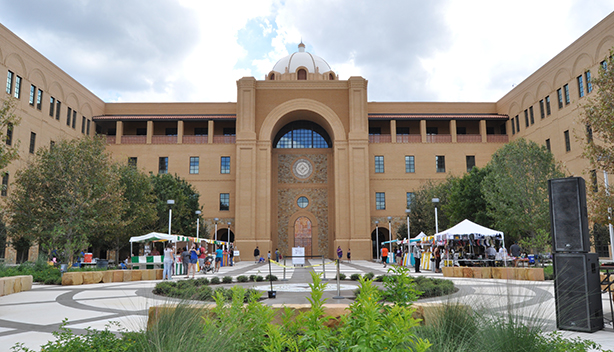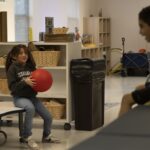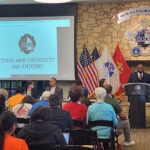
By Marie Bueno
Just before sunrise, history senior Yesena Rangel, 33, wakes up to the aroma of coffee and the sound of sizzling bacon.
Before she wakes up her daughters and starts the busy morning, her husband, Richard Guerra, usually prepares breakfast as Rangel checks her Jagwire, the university’s web service portal, to complete her homework.
Rangel juggles raising two girls, ages 2 and 7, and works full-time as an administrative assistant for the university’s College of Education and Human Development, while enrolled in nine course credit hours.
Each day she wakes her daughters around 5:30 a.m., prepares them for school and leaves the house just before the traffic rush.
“I live in Pleasanton,” she said, a town of less than 10,000 residents in Atascosa County. “I do a lot of preparation … My mornings are extremely hectic.”
Rangel arrives ready for work by 9 a.m. and during her lunch hour, she attends her first class.
When this busy mother gets out of work around 5 p.m., only half of her day is done. She checks in with her mother to make sure the girls were picked up from school and fed the dinner Rangel cooked the evening before.
While her kids are under her mother’s care, Rangel waits for her evening class to begin.
During the late afternoon when most campuses slow down, a group of vehicles arrive at the university’s two South Side locations, Main Campus and Brooks City-Base Campus, populating A&M-San Antonio with nontraditional students. These students typically work the Monday through Friday nine-to-five schedule to support their families, and attend school during lunch breaks, evenings and weekends.
Rangel jokes that she is as nontraditional as a nontraditional student can get.
Nontraditional students often balance family as well as work responsibilities. Some live with extended families, while others pay mortgages. They share other traits, such as delayed enrollment in college, and are often older. Traditional students are typically younger and enroll in college immediately following high school.
Rangel’s story may feel familiar to students on this campus and across the country, who are older and juggling multiple responsibilities.
The university’s Fall 2013 Fact Book suggests that Rangel has a lot of company. Data collected shows 15.8 percent of the university’s population is between 31-35 years of age.
“What we used to call ‘nontraditional; students—older, working, married, and maybe still living at home—now constitute a large and growing percentage of those attending college in the United States. In fact, they are fast becoming the new traditional,” writes reporter Rob Jenkins in a recent article titled “The New ‘Traditional Student’” published in the Chronicle of Higher Education.
Students can take comfort in the fact that the minority is vastly becoming the majority.
The average age for A&M-San Antonio’s Fall 2014 undergraduates is slightly over 30, said Jane Mims, director of institutional research, in an Oct. 6 email.
That’s older than the average student attending San Antonio’s other public university, the University of Texas at San Antonio.
Institutional research confirms the average age of undergraduate students for Fall 2014 is 22, wrote Jesus Chavez, UTSA Public Affairs Specialist, in an Oct 3. email.
“A&M definitely has a different feel,” History senior Ernest Halog said. “That’s one of the reasons why I chose to go here.”
Haglog, 35, returned to school after 20 years and feels he has the advantage of being more focused, compared to his younger years.
“I like the nontraditional atmosphere,” he said. “I don’t want to be in a classroom of 200 (students) and I like the fact many of the students are a little older.”
After class ends around 9 p.m., Rangel clocks in for her next full-time job, being a mommy.
“I’ll get the kids clothes ready, pack lunches, and get them bathed,” she said.
Rangel puts the girls to bed after reading them bedtime stories and when they’re asleep, she starts her homework.
“It’s off to bed about 1:00 a.m,” she said.
She expects to graduate spring of 2015.
“It’s hectic being a student, and I wouldn’t be able to do it without the help of my husband and mother … They are a great support system,” she said. “My daughters are my motivation; I want them to know higher education is important.”






